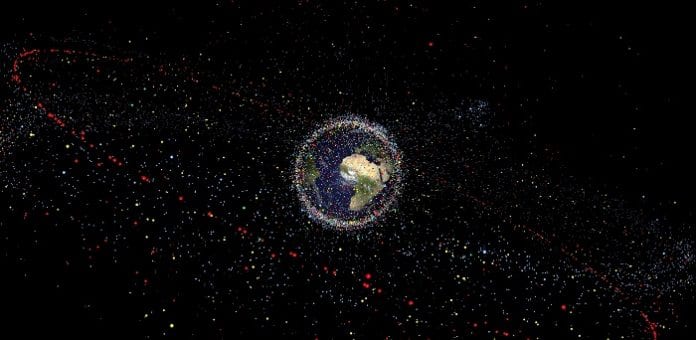Japanese scientists present ambitious plan to use space lasers to remove space debris
Every year earthlings send thousands of spacecrafts like rockets, probes, satellites and space stations. And this has been going on since 1957 since the first space rocket, Sputnik which also happens to be the first satellite, was launched by Russia on 4th October, 1957. Due to Earth’s gravitational these rockets and satellites become part of the gigantic space debris which is revolving around the Earth and poses present and clear danger to humans and the new satellites/rockets being launched.
If you remember the Skylab, the defunct space probe which crashed in 1979 when every human being on this planet panicked because the crash site was not known to the scientists, you will know the dangers of obsolete and junk satellites.
According to NASA scientists there are around 500,000 pieces of debris the size of a marble, or larger, orbiting Earth. This orbital junk can travel at speeds of up to 17,500 miles per hour — fast enough to cause serious damage to satellites and even the International Space Station (ISS).
Now, a team of scientists from Japan’s Riken research institute have come up with an ambitious plan to eliminate this very space debris with the help of space lasers.
In a paper published in the latest issue of the journal Acta Astronautica, the researchers proposed a method that basically involves blasting an estimated 3,000 tons of debris through a fiber optic laser mounted on the ISS. The researchers have proposed a two step process to obliterating the space junk to eternity. First they plan to use existing infrared telescope of the European Space Agency’s Extreme Universe Space Observatory (EUSO) to track and fix position of each space debris revolving the Earth.
Once they have the needful information about the space junk, they plan to use a fiber-based laser system to shoot the objects until they are knocked out of their orbit and destroyed during re-entry into Earth’s atmosphere.
“The new method combining these two instruments will be capable of tracking down and deorbiting the most dangerous space debris, around the size of one centimeter. The intense laser beam focused on the debris will produce high-velocity plasma ablation, and the reaction force will reduce its orbital velocity, leading to its reentry into the earth’s atmosphere,” the researchers said in a statement on Friday.
The scientists have already started working on their plan and are now deploying a small proof-of-concept experiment on the ISS using a small, 20 centimeter version of the EUSO telescope and a laser with 100 fibers.
“If that goes well, we plan to install a full-scale version on the ISS, incorporating a three-meter telescope and a laser with 10,000 fibers,” Toshikazu Ebisuzaki, the lead author of the paper, said in the statement. “Looking further to the future, we could create a free-flyer mission and put it into a polar orbit at an altitude near 800 kilometers, where the greatest concentration of debris is found.”
If the Japanese scientists succeed, they will have made our spacecrafts, ISS and Earth a safer place to live.

